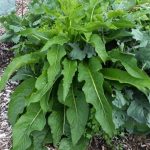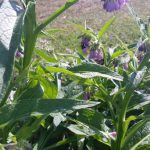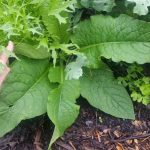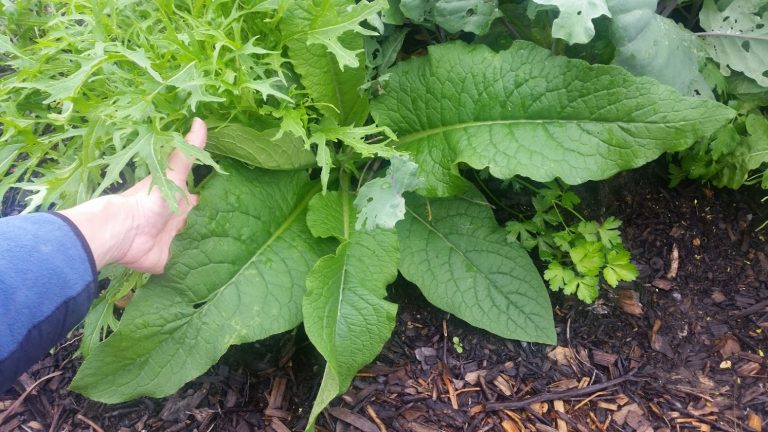I could not profess to being a true soldier of permaculture were I to not begin my “Permaculture Champions” series with COMFREY.
I’ve heard it called the “Queen of Permaculture”, and a fitting title it is! Comfrey (Symphytum officinale), is one of the most useful plants in any permaculture garden. Hardy, relatively trouble free and easy to grow, once established comfrey’s deep root system can make it difficult to remove should you ever need to – so for a long and happy relationship with your comfrey be sure to choose your planting position carefully. Most varieties of comfrey will readily self sow so for small gardens the sterile “Bocking 14” cultivar of Russian Comfrey (Symphytum x uplandicum) is recommended.
The uses for comfrey are vast. Also known as “knitbone” (a testament to its healing powers) comfrey is renown for assisting the body to heal a wide variety of ailments including (but not limited to) bronchial problems, broken bones, sprains, arthritis, gastric and varicose ulcers, severe burns, acne and other skin conditions.
But the fun doesn’t stop there! In the garden comfrey is excellent for producing mulch and can be cut from 2 – 5 times per year. The comfrey in my garden dies back in winter and mulches the ground for me. Too easy! Comfrey is also known as a dynamic accumulator. Long roots access nutrients deep in the subsoil that would otherwise remain out of reach to other plants, these nutrients are relocated throughout the plant and returned to the topsoil when cutting the leaf mass and applying it to the soil surface. This then makes those nutrients available to the shallower rooted crop plants.
Beneficial insects are attracted to comfrey. Parasitoid Wasps will hunt around the comfrey plant, Lacewings will lay their eggs on comfrey, and the native Blue Banded Bees love my comfrey (the Blue Banded Bee is a “buzz pollinator” and is capable of pollinating plants which other bees and insects are unable to pollinate). And frogs! Every time I cut back my comfrey I feel the need to apologies to all the frogs that I know will have to re-home themselves. Lizards also enjoy hiding in the dense foliage.
As a ground cover comfrey will protect bare soil from sun and erosion. And comfrey also has a long history for use as an animal feed.
Comfrey is the one plant that I feel my garden can never have enough of!
Now run outside and create your oasis!
Jo






